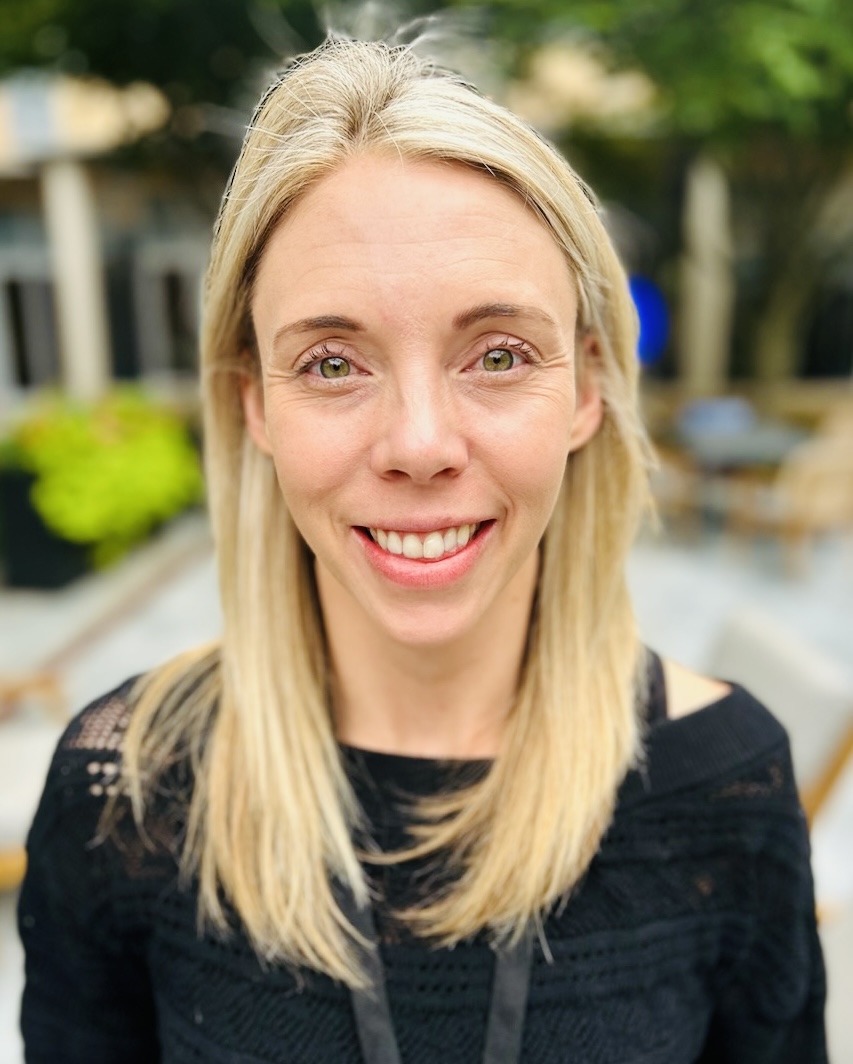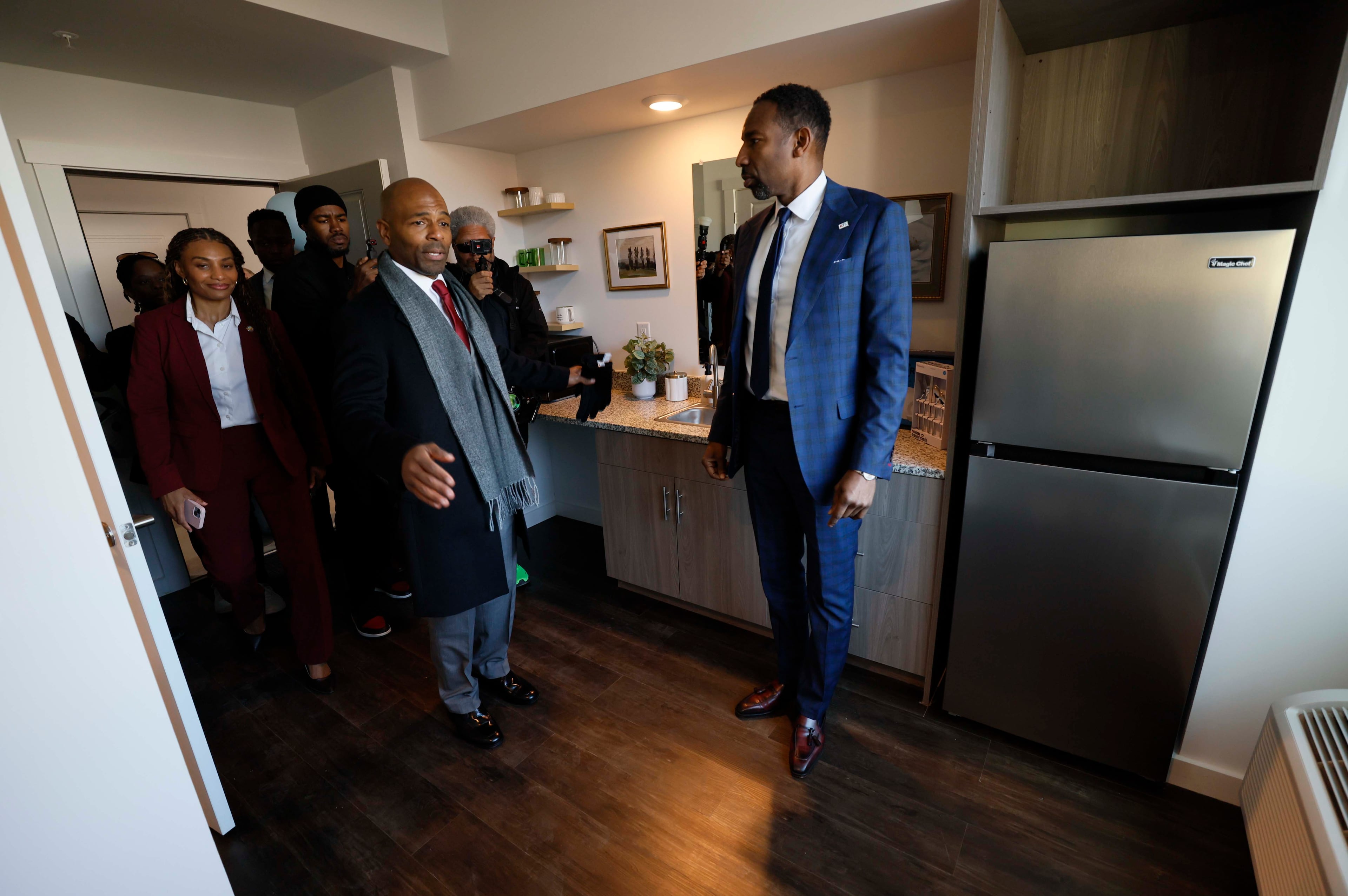The material is the message in Atlanta artist Olu Amoda’s sculptures
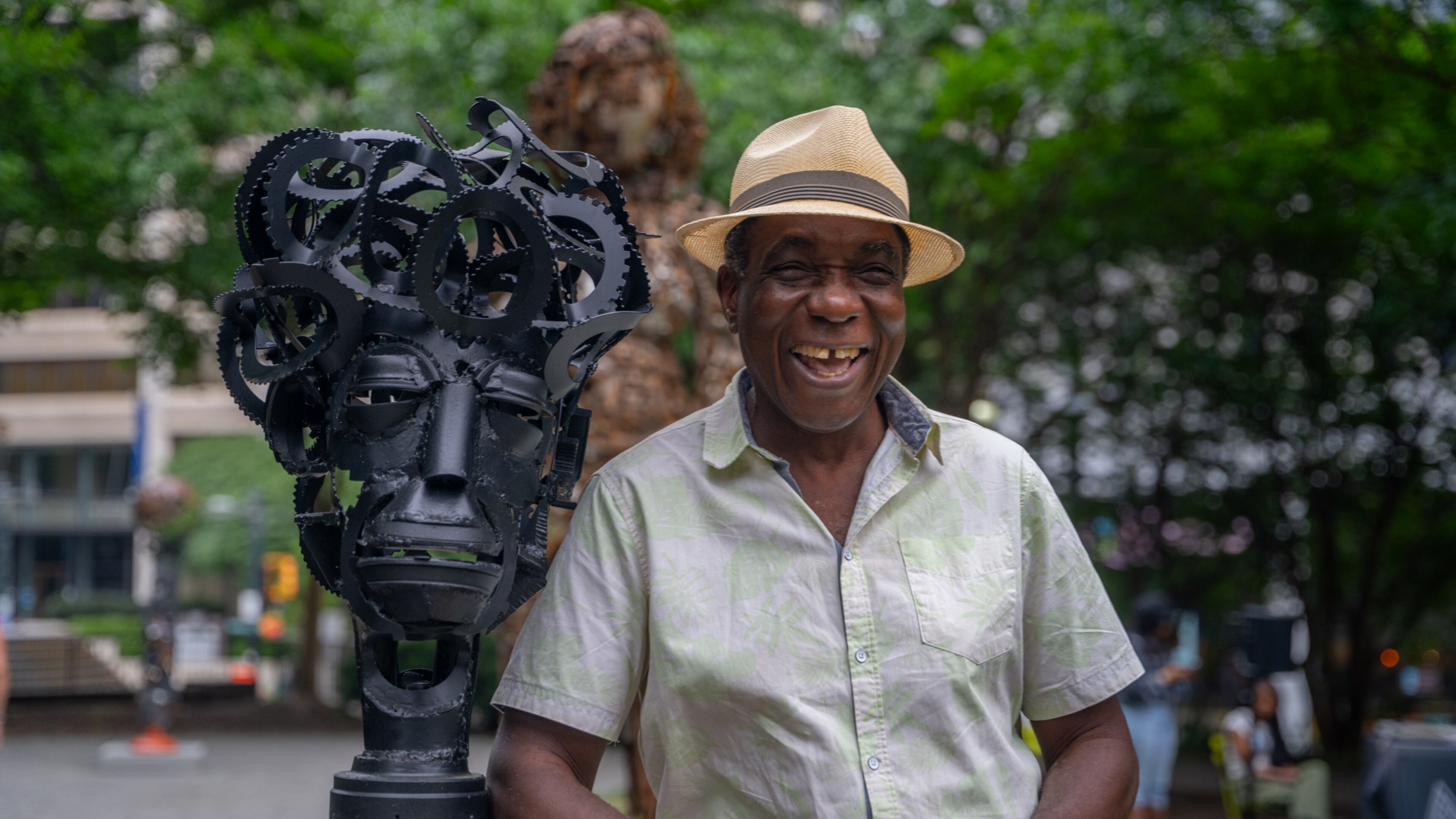
When Alpharetta-based artist Olu Amoda was a child growing up in a small town in the Delta state of Nigeria, he remembers the rhythmic sound of metal being shaped by his goldsmith father’s anvil. He also recalls taking pieces of charcoal and dashing around buildings to draw haphazard lines on the walls while his mother, a street chef, served her homemade jollof rice to passersby. His creative impulse was present young.
But perhaps more influential on his artistic expression was the town pastor who would pray over objects like cars and houses. The pastor would speak to the objects, then might pour gin or whiskey over parts for a ritual blessing. The material became spiritual.
“That brought me into a consciousness of the spirit essence of material — what I call the latent energy now,” Amoda said.
When objects break apart and disintegrate, he explained, each fragment carries with it the spirit of the whole. Amoda is also fascinated by forensics and how objects, through DNA and carbon, can tell you who touched them or how old they are.
“Material has memory,” he said.
This philosophy is the narrative behind most of Amoda’s work, including his current exhibition, a sculpture garden called “Memory in the Material” on display through June 17 in Woodruff Park.
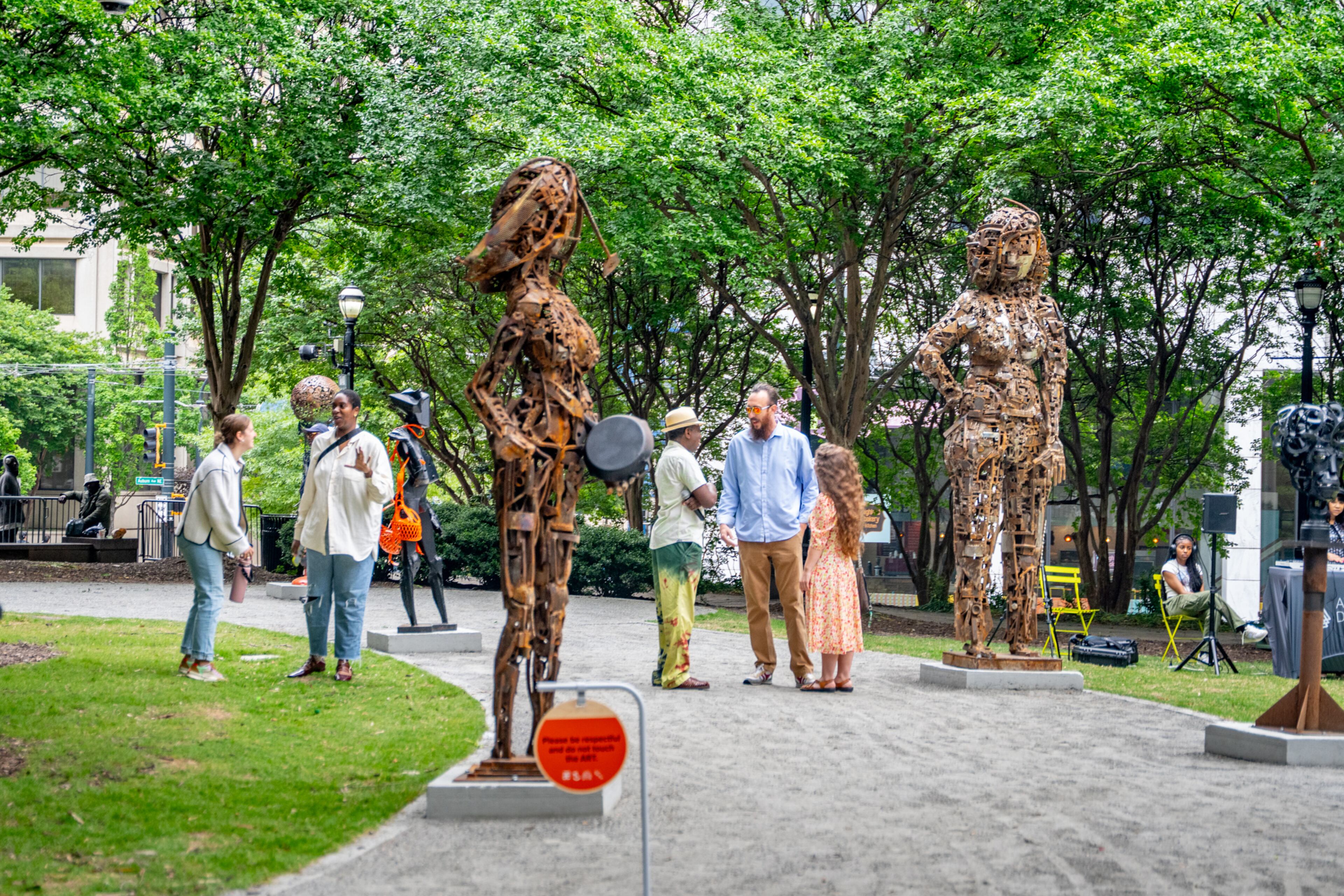
The exhibition is the latest in the Art in the Park series, a public art initiative by the Atlanta Downtown Improvement District and Arts & Entertainment Atlanta produced in collaboration with Dashboard, an Atlanta nonprofit that creates public art experiences.
“Memory in the Material” features seven large-scale sculptures of expressive human forms Amoda assembled using discarded parts from blacksmith shops and metal objects given to him from friends.
Amoda intentionally selects each bolt, screw, scrap and joint.
“I go through the rubble,” he said, “and pick up pieces that are yelling at me or saying ‘look’ or ‘I’m next.’”
When he was starting out as an artist in college, the energy of the material was secondary to form and function.
“A round ball becomes a head or the bulbs of someone’s backside,” he said. “But as you start to master your craft, all these considerations, this careful selection of what goes to one place, is thrown aboard.
“ … Now the objects find me — I don’t find them. I try as much as possible not to alter the materials or the objects. I could cut it so that it still retains part of the latent energy of the material, but I leave a clue as to where they come from.”
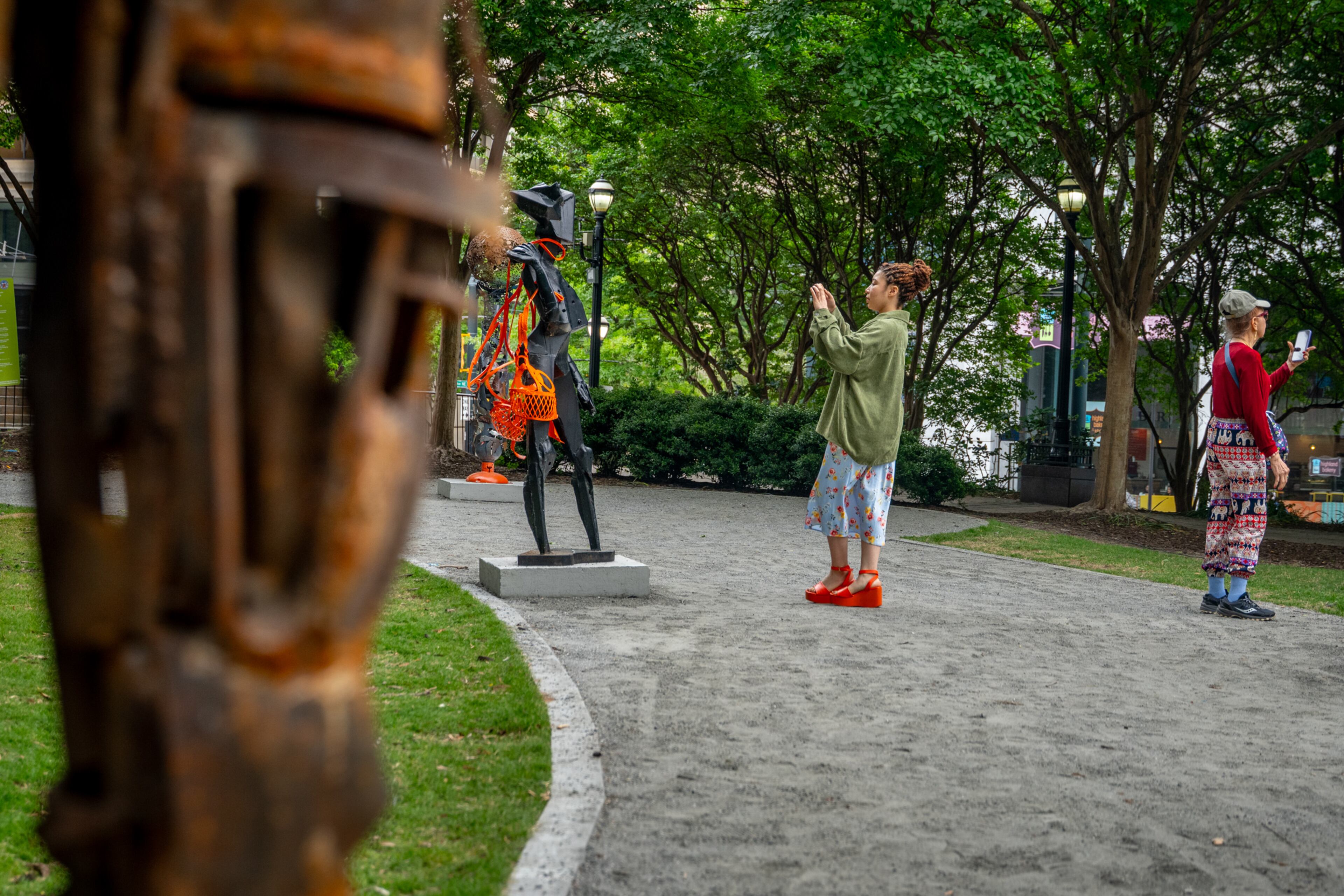
Three of the sculptures in “Memory in the Material” are a collection humorously called “Real Housewives of Buckhead.” The satirical female figures are assembled from parts of balusters from homes in Buckhead.
“I’m not saying it in a direct way, but I’m saying (the housewives) are the authorities who decide the interiors. They speak to these objects,” Amoda explains. “The words spoken to an object stay with the object … I bring those attitudes into my work because every piece must have an attitude.”
In addition to Art in the Park, three of Amoda’s sculptures are also featured in the eighth installment of the Suwanee SculpTour, a series of sculptures dotted around Suwanee Town Center that can be enjoyed through 2027.
One of Amoda’s works in the SculpTour called “Miles” is a towering human form created from repurposed automatic transmission discs. According to the SculpTour guide, Amoda’s use of transmission discs is a subtle commentary on transportation across the Mexico-US-Canada borders.
Amoda’s finished sculptures — the sum of the parts — amount to “a sort of collective consciousness” where no single part is useless, he said. For him, this message, too, is spiritual: It’s symbolic for humanity.
If you go
Art in the Park. Through June 17. Woodruff Park. 91 Peachtree St., Atlanta. AtlantaDowntown.com.
SculpTour. Through 2027. Multiple locations in Suwanee. suwanee.com/engage/public-art/suwanee-sculptour.
